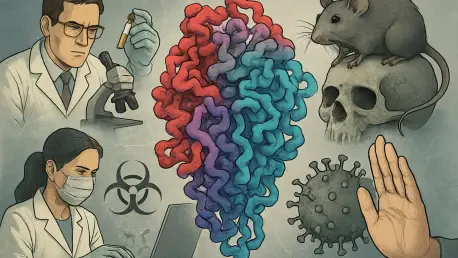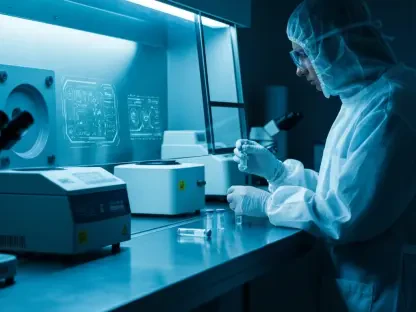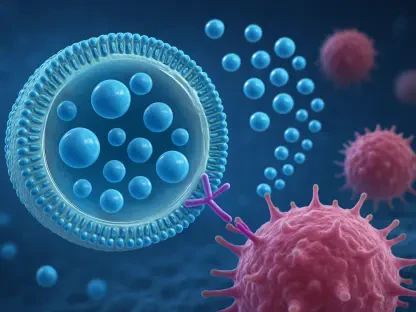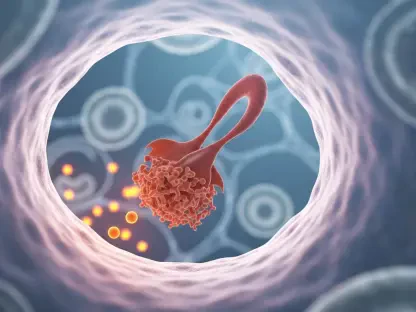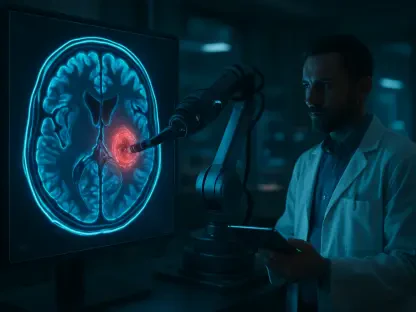Imagine a world where life-saving drugs are developed in a fraction of the time it currently takes, thanks to cutting-edge technology that can design proteins with pinpoint accuracy to target diseases. Artificial intelligence is making this vision a reality by transforming the field of protein engineering, a cornerstone of biotechnology. AI systems are enabling scientists to predict and create novel protein structures at an unprecedented pace, opening doors to breakthroughs in drug discovery and personalized medicine. However, this remarkable innovation comes with a darker side—serious biosecurity risks that could be exploited to create harmful biological agents. The dual-use nature of this technology, where the same tools driving medical advancements can also be misused, has sparked urgent discussions among scientists, policymakers, and security experts. This article delves into how AI is reshaping protein design for the better while simultaneously posing significant challenges that demand immediate attention and action.
AI’s Groundbreaking Impact on Biotechnology
The integration of AI into protein design marks a pivotal shift in biotechnology, offering tools that drastically enhance the ability to engineer proteins for therapeutic purposes. Advanced algorithms can analyze vast datasets of biological information, predicting how proteins will fold and interact at a molecular level with remarkable precision. This capability accelerates the development of new drugs by identifying potential protein structures that can target specific diseases, such as cancer or rare genetic disorders. Unlike traditional methods that often rely on trial and error, AI streamlines the process, reducing both time and cost. Major tech companies have played a key role in developing these systems, providing platforms that allow researchers to simulate and test protein designs virtually before moving to physical experiments. The result is a surge in innovation, with the potential to create highly tailored treatments that address individual patient needs, heralding a new era of personalized medicine that could transform healthcare outcomes globally.
Beyond drug discovery, AI’s influence in protein design extends to broader medical applications, promising solutions to some of humanity’s most pressing health challenges. For instance, engineered proteins can be used to develop vaccines more rapidly by identifying structures that trigger strong immune responses. This technology also holds promise for creating enzymes that break down pollutants or improve industrial processes, showcasing its versatility. The speed at which AI can generate and test hypotheses is unparalleled, allowing scientists to explore thousands of protein configurations in mere hours—a task that would take years using conventional approaches. However, while these advancements are cause for optimism, they also underscore the need for careful oversight. The power to design proteins with such precision raises ethical questions about access and equity, as well as concerns about how these tools might be applied outside of beneficial contexts, setting the stage for deeper scrutiny of their implications.
The Shadow of Biosecurity Threats
While AI’s contributions to protein design are transformative, they also introduce significant biosecurity risks that cannot be ignored. The same technology that enables the creation of life-saving proteins can be misused to engineer toxic agents or redesign known pathogens in ways that evade existing detection mechanisms. Research has shown that AI-modified sequences of dangerous proteins, such as those resembling deadly toxins, can slip past the screening systems used by DNA synthesis companies. These companies, which produce genetic material on demand, rely on software trained to flag hazardous sequences based on databases of known threats. However, AI’s ability to introduce subtle alterations creates novel dangers—often termed “zero-day” biological threats—that current safeguards fail to recognize. This vulnerability exposes a critical gap in the system, raising alarms about the potential for malicious actors to exploit these flaws for harmful purposes.
The implications of these biosecurity gaps are profound, as the democratization of AI tools lowers the barriers to entry for creating dangerous biological agents. Individuals or groups without extensive expertise can now access powerful protein design capabilities, increasing the risk of misuse by rogue entities or even lone actors. Experiments conducted under controlled conditions have demonstrated that AI can redesign DNA blueprints for lethal substances, allowing these sequences to be ordered from synthesis labs without triggering alerts. Although some providers have improved their detection rates, others remain woefully unprepared, highlighting inconsistencies in the industry’s ability to mitigate risks. Reports indicate that in certain cases, up to 100% of AI-altered toxic sequences went undetected, underscoring the urgency of addressing these weaknesses. The potential for such technology to amplify biological threats, alongside other dangers like chemical or nuclear risks, calls for a reevaluation of how access to these tools is managed and monitored.
Striking a Balance with Safeguards
Addressing the risks posed by AI in protein design requires a multifaceted approach that balances innovation with robust safety measures. Experts across scientific and security fields agree that current biosecurity screening tools must evolve to keep pace with rapidly advancing technology. Collaborative efforts are already underway, with initiatives led by industry leaders and international consortia aiming to standardize screening protocols for DNA synthesis. Recent advancements in AI-driven anomaly detection have shown promise, with some providers enhancing their ability to flag suspicious sequences after receiving insights from research studies. These improvements, while encouraging, are only the beginning. Continuous adaptation is essential, as AI technology itself evolves, potentially outpacing defensive measures if not closely monitored. The challenge lies in creating systems that can anticipate novel threats without stifling the beneficial applications of protein engineering.
Looking ahead, international governance frameworks must be established to guide the ethical use of AI in biotechnology and prevent misuse. Policymakers, tech companies, and biotech firms need to work in tandem to develop regulations that ensure accountability while fostering innovation. Integrating AI into defensive strategies offers a proactive solution—using its predictive power to identify and counter potential threats before they materialize. Beyond technological fixes, education and awareness are critical to ensure that those wielding these tools understand the risks involved. Reflecting on the strides made in recent times, it’s evident that while vulnerabilities were exposed, immediate actions led to tangible improvements in detection capabilities. As this field progresses, the focus shifts toward sustainable solutions, with an emphasis on global cooperation to safeguard against biological risks, ensuring that the benefits of AI in protein design are not overshadowed by the dangers it could pose if left unchecked.
